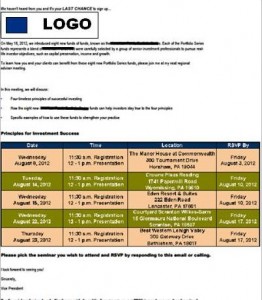Just before everything shut down in the face of the pandeminc, a group of financial marketers convened in Boston for a meeting of the Gramercy Institute. The session was billed as focusing on the topic of ”What’s New and What’s Next in Financial Marketing“ and indeed much of the content touched on the future, but, taking a cue from the news at the time, the host initiated a discussion of marketing in a crisis.
Broadly, the conversation fell into two buckets: communication “best practices” and the role of marketing. Two key take-aways:
- Communication “best practices.” There was agreement that transparency and authenticity were key to building connections with customers, but also that there was no clear playbook for communication frequency and channel. Discussion participants recognized the need to respect the limited time and frayed nerves of customers but also saw potential value in providing clear guidance in an environment filled with uncertainty. Likewise, they recognized the need to find a balance between communication overload – exacerbated by the worldwide turn to digital communications in light of severe restrictions on face-to-face contact – and the value of demonstrating presence and building community when so much of the current crisis feels (and is) isolating. Finally, participants expressed mixed feelings about finding opportunities in the crisis. Many said that this was definitely not the right time to be promoting products. Some made the argument that people are looking for concrete assistance and that there was a place for tasteful promotion of solutions that could meet the needs of customers in the current environment.
- Role of marketing. As the discussion turned to the role of marketing amidst the crisis, there was widespread consensus that in some ways the environment was one in which marketing could really prove its value in building relationships with customers and prospects and in delivering timely, conscientious, clear communications. Even more, though, there was agreement that marketers at B2B financial services companies should seize on this as a chance to forge a closer partnership with their sales colleagues, who are likely to be struggling to adjust to a world in which face-to-face contact is minimized or even completely foregone. Everyone agreed that if Marketing could find a way to enable sales to leverage digital and voice channels to nurture relationships at a distance and at scale, it would have a significant impact on the ability of the company to navigate these difficult times.
While the event was likely the last in-person meeting for the near future for most in attendance, it was a valuable opportunity to share ideas with colleagues and learn from each other as chaos seemed to be descending. It has given us much to think about as we all now hunker down, socially isolate to try to stay safe, and think about what the future might hold in store.
